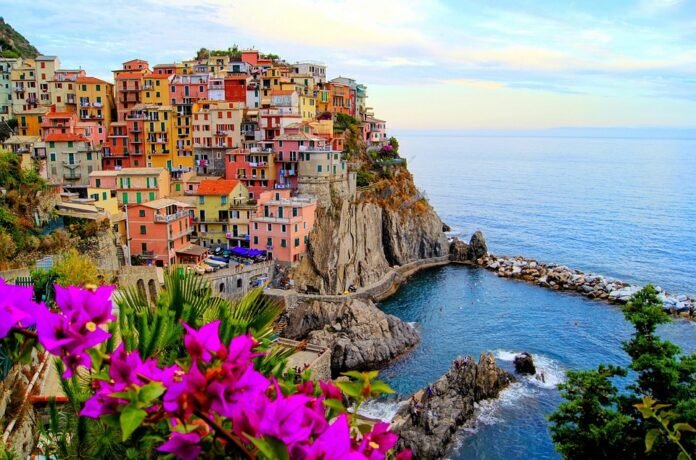Of course. Here is an article on the topic “Flashpoint: The Tensions Redrawing the World Map.”
Flashpoint: The Tensions Redrawing the World Map
For decades, we lived with the illusion of a settled world. The fall of the Berlin Wall ushered in an era defined by the apparent triumph of liberal democracy, globalized trade, and a “unipolar moment” of American preeminence. The lines on the map, while still sites of localized conflict, seemed largely fixed. That illusion is now shattered.
We have entered a new, volatile era of geopolitical flux. Across the globe, long-simmering tensions are boiling over, driven by a potent cocktail of resurgent nationalism, great power competition, technological rivalries, and resource scarcity. These flashpoints are not just creating headlines; they are actively redrawing the world map—not always with ink and treaties, but with military hardware, economic coercion, and the fracturing of old alliances. The 21st-century map is being defined less by geography and more by spheres of influence, digital domains, and ideological divides.
The Epicenter: Eastern Europe’s New Iron Curtain
The most visceral redrawing of the map is happening in Eastern Europe. Russia’s full-scale invasion of Ukraine is more than a war over territory; it is a violent rejection of the post-Cold War security order. President Vladimir Putin’s revanchist ambitions seek to re-establish a Russian sphere of influence and challenge the legitimacy of NATO.
The consequences have been profound. Borders have been literally redrawn through Russia’s illegal annexations. But the metaphorical shifts are even more significant. A new Iron Curtain, this one forged in the fires of Bucha and Mariupol, is descending. Finland and Sweden, long defined by their neutrality, have rushed into NATO’s arms, extending the alliance’s border with Russia by over 800 miles. Europe, jolted from its complacency, is rearming and frantically reconfiguring its energy map to decouple from Russian gas. The line between a U.S.-led West and a defiant Russia is now clearer and more militarized than at any point since 1989.
The Strategic Arena: The Indo-Pacific’s Great Game
While Europe’s conflict is hot, the long-term strategic competition that will define the century is unfolding in the Indo-Pacific. Here, the United States and a rising China are locked in a struggle for dominance. The central flashpoint is Taiwan, the democratic island that Beijing considers a renegade province. A Chinese invasion would not only trigger a catastrophic war but would also shatter the global economy, given Taiwan’s vital role in semiconductor manufacturing.
But the tension extends far beyond Taiwan. In the South China Sea, Beijing’s “nine-dash line” is a brazen attempt to unilaterally redraw maritime boundaries, turning international waters into a de facto Chinese lake. This has triggered a wave of strategic realignment. New security pacts like AUKUS (Australia, UK, US) and the revitalization of the Quad (US, Japan, Australia, India) are drawing new defensive lines across the Pacific. Nations from the Philippines to Vietnam are being forced to choose sides, creating a complex geopolitical chessboard where economic interdependence clashes with security imperatives.
The Shifting Cauldron: A New Middle East
The Middle East, a perpetual theater of conflict, is also seeing its alliances redrawn. The old paradigms are dissolving. The primary axis of tension is no longer solely the Arab-Israeli conflict but the regional cold war between Iran and its proxies on one side, and a loose coalition of Israel and Sunni Arab states on the other.
The Abraham Accords, normalizing relations between Israel and nations like the UAE and Bahrain, have redrawn the map of regional diplomacy. Former adversaries are finding common cause against a shared threat from Tehran. This has created a new strategic geography where Israeli intelligence and Saudi financial power might align. At the same time, the perception of a U.S. withdrawal from the region has created a power vacuum, which Russia and China are eagerly exploiting, further complicating the map of influence.
The Arc of Instability: The Sahel and the New Scramble for Africa
Often overlooked in Western capitals, the Sahel region in Africa represents a different kind of flashpoint—one born from climate change, weak governance, and foreign intervention. A string of military coups in Mali, Burkina Faso, and Niger has unraveled years of counter-terrorism efforts and is redrawing the continent’s map of foreign influence.
Anti-French sentiment has seen its historic military presence ejected, replaced by the opportunistic arrival of Russia’s Wagner Group mercenaries. They offer security in exchange for mineral rights and political sway, creating Russian-backed enclaves in the heart of Africa. Meanwhile, China continues its vast economic investment through the Belt and Road Initiative, securing resources and building influence without military force. This “new scramble for Africa” is creating a patchwork of competing loyalties, turning fragile states into proxies in a global power struggle.
The Underlying Forces of a Fractured World
These regional flashpoints are symptoms of deeper, global trends:
- The End of Hyper-Globalization: The belief in a single, integrated global market is giving way to “friend-shoring” and the creation of competing economic blocs.
- The Rise of Techno-Nationalism: The battle for supremacy in AI, 5G, and semiconductors is a new domain of conflict, creating a “digital iron curtain.”
- Resource and Climate Competition: As climate change intensifies, future conflicts will be fought over water, arable land, and strategic minerals, from the Arctic to Sub-Saharan Africa.
The Ink Is Not Yet Dry
The stable world map we once knew is a relic. We are living through its violent and unpredictable redrawing. The new map is multi-layered, defined by military alliances, supply chains, fiber-optic cables, and ideological fault lines. Navigating this treacherous new geography requires shedding old assumptions and recognizing that the tectonic plates of global power are shifting beneath our feet. The flashpoints of today are hammering out the boundaries of tomorrow, and on this new map, the ink is far from dry.

